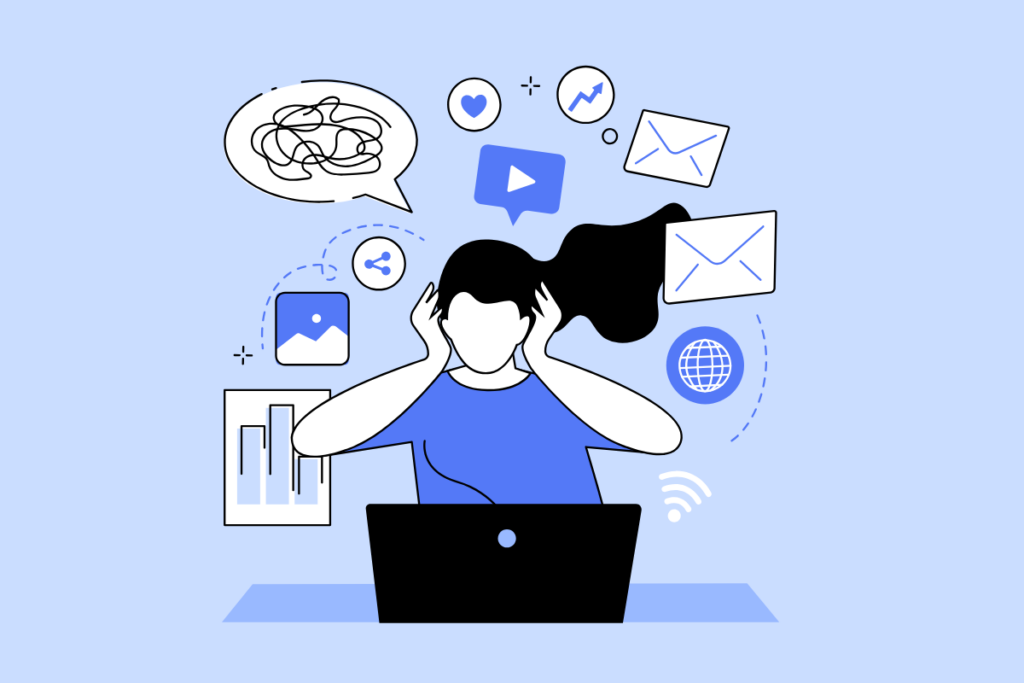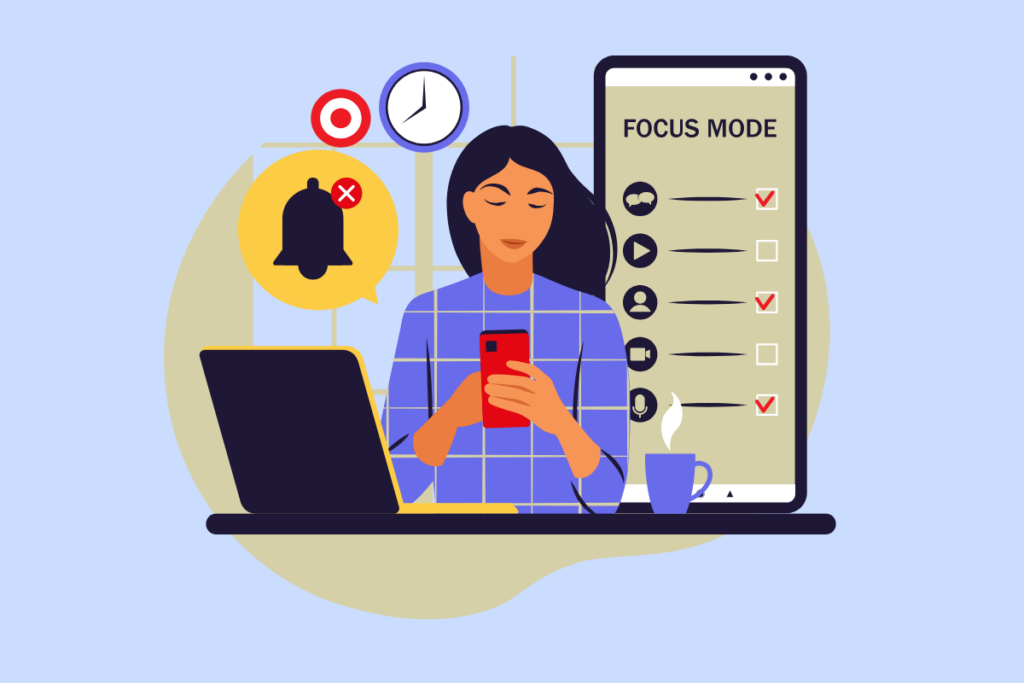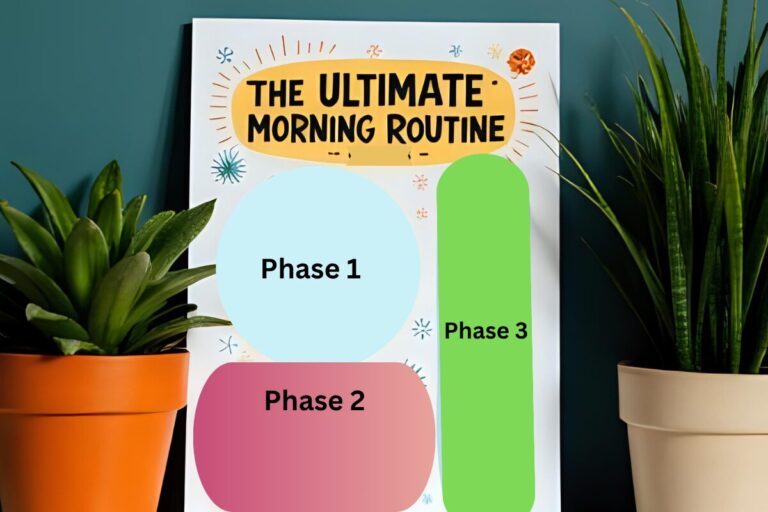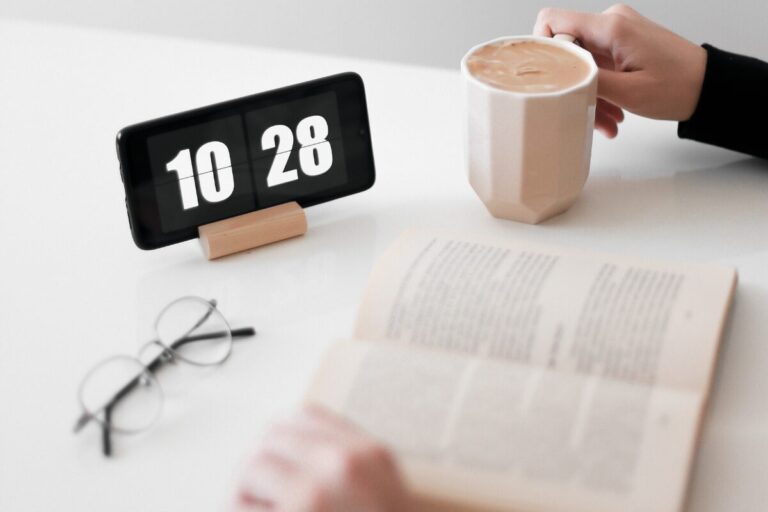How to Overcome Procrastination Working From Home: 12 Proven Strategies That Actually Work in 2025
Working from home has revolutionized our professional lives, but it’s also introduced a whole new set of challenges. Your cozy couch is calling, Netflix is just one click away, and that pile of laundry seems more appealing than your ongoing project. Sound familiar?
I still struggle sometimes too. The freedom of working remotely can quickly become a productivity prison when procrastination takes over. But here’s the good news – procrastination isn’t a character flaw, it’s a habit that can be broken with the right strategies and mindset shifts.
In this comprehensive guide, you’ll discover 12 scientifically-proven methods overcome procrastination working from home and transform your home workspace into a productivity sanctuary. Whether you’re a seasoned remote worker struggling with motivation or new to working from home, these actionable strategies will help you reclaim your focus and achieve your professional goals.
The Hidden Cost of Procrastination When Working From Home
Procrastination isn’t just about wasted time. It creates a cascade of negative effects that extend far beyond missed deadlines. When you procrastinate at home, work bleeds into personal hours, creating a perpetual state of being “almost working” without true rest or productivity.

The financial impact is equally concerning. People who struggle with consistent procrastination earn less in average performance-based compensation and fail to seize advancement opportunities compared to their more focused peers.
Why Remote Employees Struggle with Procrastination in 2025
Understanding why procrastination hits differently in remote environments is the first step to overcoming it. The remote work landscape has evolved significantly since its mass adoption, bringing new challenges that weren’t as prevalent in earlier years.
Blurred Boundaries Between Work and Personal Life
When your office is also your living room, bedroom, or kitchen, your brain struggles to switch between work and relaxation modes. This cognitive confusion is real – neuroimaging studies show that remote workers who don’t have dedicated workspaces experience 28% more decision fatigue throughout the day. Your brain is constantly processing mixed environmental signals, making it harder to stay in “work mode” when you need to focus.
Digital Distractions Have Multiplied Since 2023
The digital landscape has become increasingly designed to capture your attention. Since 2023, the average remote employee receives 47% more notifications across devices than before. Social media platforms continue to refine their algorithms to become more personalized and compelling, while streaming services continuously release content optimized to keep you hooked.

Additionally, the integration of AI assistants into everyday applications has created a new form of productive-feeling distraction. Many remote workers report spending hours “organizing” or “optimizing” their digital tools instead of doing their actual work – all while feeling like they’re being productive.
Isolation Amplifies Motivation Challenges
Humans are social creatures, and the absence of colleagues physically present can significantly impact motivation. Without the ambient accountability of working alongside others, internal motivation must carry a heavier load.
The New Normal: Hybrid Work Transition Difficulties
The rise of hybrid work models has introduced a unique challenge: transitioning mentally between home and office environments. Your brain struggles to maintain consistent work routines when the environment keeps changing, making it even more important to establish strong anti-procrastination systems.
As organizations continue experimenting with different hybrid configurations in 2025, many remote workers find themselves caught in a productivity limbo – neither fully adapting to remote work nor benefiting from the structure of office life. This partial adaptation creates cognitive dissonance that makes focused work more challenging than ever before.
Set Up Your Environment for Success
Your physical workspace has a profound impact on your productivity, yet it’s often overlooked in favor of digital solutions. Let’s explore how to optimize your physical environment to signal your brain it’s time to focus.
1. Create a Dedicated Workspace That Signals “Work Mode”
Your brain forms powerful associations between environments and behaviors. When you work from your bed or couch, you’re training your brain to associate these relaxation spaces with work, which dilutes both your productivity and your ability to truly relax in these spaces later.
The solution: create a workspace that exists solely for focused work, even if it’s just a specific corner of a room.
The key is consistency and purpose. Your workspace should contain only work-related items and be free from personal distractions. Consider using sensory cues that signal “work time” – a specific scent diffuser, background music, or even particular clothing you wear only when working. These environmental anchors create powerful neural associations that help your brain transition into focus mode more quickly.
2. Remove Visual Temptations from Your Line of Sight
The human brain processes visual information first and most powerfully among all senses. Each visual distraction in your environment requires mental energy to ignore, depleting your finite willpower resources throughout the day. Conduct a visual audit of your workspace and ruthlessly eliminate anything that might trigger non-work thoughts.
Particular attention should be paid to “aspirational distractions” – items that represent activities you’d rather be doing, like gaming controllers, exercise equipment, or household projects waiting to be completed.
3. Use Physical Barriers to Separate Work from Home Life
Physical boundaries reinforce mental boundaries. Something as simple as a room divider, a decorative screen, or even a different colored rug under your desk can create psychological separation between work and home spaces. These barriers work by triggering context-dependent memory, helping your brain recognize when it should be in “work mode” versus “home mode.”
For those with limited space, portable solutions can be equally effective. A specific laptop stand that you only use during work hours, a desk lamp that’s only on during focus time, or even a particular chair cushion can serve as physical context cues. Use these physical markers only during designated work time to keep strengthening the association.
Digital Focus Techniques That Actually Work
Digital distractions represent the biggest obstacle when trying to overcome procrastination working from home. While completely eliminating technology isn’t practical, strategically managing your digital environment can transform your productivity.
4. Install the Right Focus Apps for Your Specific Distractions
Generic focus apps often fail because they don’t address your particular distraction patterns. Start by tracking exactly which digital distractions consume your time. Most people are surprised to discover their actual usage patterns differ significantly from their perception. Use screen time analytics for one week before choosing your focus tools.
If social media is your primary distraction, apps like Detox Lock or One Sec allow you to block specific apps during designated focus periods. For those who struggle with endless browser tabs, extensions like OneTab or Workona help consolidate and organize your digital workspace. Notification management tools like Focus Mode on Android or Focus on iOS can be customized to allow only truly urgent communications through.
The most effective approach is creating different focus profiles for different types of work. Deep creative work might require complete digital lockdown, while collaborative tasks might allow team messaging apps while blocking everything else. Customize your digital barriers to match your specific work requirements.
Focus App Selection Guide
Primary Distraction: Social Media → Freedom, Cold Turkey, StayFocusd
Primary Distraction: Email/Messaging → Boomerang, Inbox When Ready, Slack Focus Mode
Primary Distraction: News/Content → Leechblock, Mindful Browsing, News Feed Eradicator
Primary Distraction: Phone → Forest, Focus Bear, Opal
Primary Distraction: Multiple Apps → Focus (Mac), Focus Sessions (Windows), ActionDash (Android)
5. The 2025 Digital Detox Protocol
The constant connectivity of remote work creates cognitive fatigue that makes procrastination more likely. Unlike traditional “digital detoxes” that are unrealistically long for most workers, the 2025 protocol focuses on strategic, shorter breaks.
Start with two 30-minute completely offline periods each day – one mid-morning and one mid-afternoon. During these periods, all devices should be physically moved out of reach. Use this time for analog activities that support your work: brainstorming on paper, reviewing printed materials, or simply taking a proper break. After two weeks, extend to 45-minute periods, and gradually work toward a daily 2-hour offline deep work session.
| Digital Detox Level | Protocol | Productivity Impact |
|---|---|---|
| Beginner | Two 30-min offline periods daily | +18% focus improvement |
| Intermediate | Two 45-min offline periods daily | +27% focus improvement |
| Advanced | One 2-hour deep work session daily | +34% focus improvement |
| Expert | Morning offline until first scheduled check-in | +42% focus improvement |
What makes this protocol effective is its gradual implementation. Rather than attempting a dramatic lifestyle change, these incremental steps allow your brain to adapt to periods of focused attention. Many entrepreneurs working from home report that after following this protocol for one month, they naturally prefer focused work sessions and find constant connectivity more draining than before.
6. Set Up Focus Filters on Your Devices
The latest operating systems now include sophisticated focus filtering capabilities that go beyond simple “do not disturb” modes. These filters allow you to create context-specific environments on your devices that automatically activate based on time, location, or even the applications you’re using. By properly configuring these filters, you can create a digital environment that supports focused work rather than undermining it.
Start by creating at least three distinct focus profiles: Deep Work (blocking almost everything), Collaborative Work (allowing team communication tools but blocking social media and news), and Administrative Work (allowing email and productivity tools but limiting other distractions). Schedule these profiles to activate automatically during your designated work blocks to remove the decision fatigue of manually switching modes.

For maximum effectiveness, sync your focus filters across all devices. When your computer enters Deep Work mode, your phone and tablet should automatically follow suit. This cross-device synchronization eliminates the common problem of reaching for your phone when your computer blocks distractions.
Psychological Hacks to Beat Procrastination
Even with the perfect environment and digital setup, internal psychological barriers can still trigger procrastination. These next strategies address the mental and emotional components that often sabotage remote work productivity. By understanding the psychological mechanisms behind procrastination, you can implement targeted interventions that work with your brain’s natural tendencies rather than against them.
The most effective anti-procrastination systems combine external controls with internal motivational strategies. While external controls like blocking apps provide immediate relief, lasting change requires addressing the underlying psychological patterns that lead to procrastination in the first place.
7. The 5-Minute Commitment Method
Procrastination often stems from overestimating the difficulty or discomfort of a task. The 5-Minute Commitment Method leverages the Zeigarnik Effect – our brain’s tendency to remember uncompleted tasks more vividly than completed ones. By committing to just five minutes of focused work on your most avoided task, you create enough momentum to overcome initial resistance while making the task feel more manageable.
When implementing this technique, it’s crucial to genuinely give yourself permission to stop after five minutes. Paradoxically, this freedom makes continuing more likely. For best results, combine with a visible timer that creates a small sense of urgency during those initial five minutes.
8. Task Chunking: Break Down Projects into Micro-Tasks
Large, ambiguous projects are procrastination magnets. Task chunking involves breaking work into such small, specific actions that they become almost impossible to procrastinate on. Unlike traditional to-do lists that might include vague items like “work on report,” effective chunking creates ultra-specific tasks like “write introduction paragraph for section 2 of report” or “find three supporting statistics for main argument.”
The ideal micro-task can be completed in 25 minutes or less and has a clear, observable completion point. This approach works by triggering small dopamine releases with each completed item, creating a positive reinforcement cycle that makes continuing work more appealing than procrastinating. For remote workers, this technique is particularly effective because it provides the sense of progress and accomplishment that often goes unnoticed without colleagues to witness your daily achievements.
- Replace “Update website” with “Add new testimonial to homepage”
- Replace “Work on project proposal” with “Write executive summary (maximum 250 words)”
- Replace “Prepare for meeting” with “Create 5-slide presentation outline”
- Replace “Research competitors” with “Complete SWOT analysis for Competitor A”
- Replace “Clean inbox” with “Process 25 oldest emails with 2-minute rule”
9. Reward Systems That Trigger Dopamine Response
Remote work often lacks the natural rewards and social recognition found in office environments. Creating your own structured reward system can fill this gap and provide the motivational fuel needed to overcome procrastination. The most effective reward systems for remote workers pair small, immediate rewards with larger, accumulated benefits.
Design a tiered reward structure that includes immediate micro-rewards (5 minutes of social media after completing a difficult task), daily rewards (a walk outside after hitting your main goal for the day), and weekly larger rewards (a movie night or special meal after achieving your week’s objectives). The key is consistency – rewards must be contingent on completion of specific work targets, not given regardless of performance.
For maximum effectiveness, make rewards visual and trackable. Many remote workers find success with physical representations of progress, such as moving tokens from a “to-do” jar to a “completed” jar, with rewards triggered at specific milestones. This tangible representation creates a visual reinforcement that digital tracking often lacks.
Accountability Systems for Remote Workers
Without the ambient accountability of an office environment, remote workers must create intentional systems to maintain consistency. The most successful remote professionals don’t rely solely on willpower – they build external structures that keep them on track regardless of motivation fluctuations.
Accountability works by creating external consequences for internal choices, effectively bridging the gap between your present self (who wants to procrastinate) and your future self (who wants the work completed). The following systems have proven particularly effective for remote workers across various industries and personality types.
10. Find a Virtual Accountability Partner
Human connection remains one of the most powerful anti-procrastination tools available. Virtual accountability partnerships create social consequences for procrastination in an environment that otherwise lacks immediate social feedback. The most effective partnerships include daily check-ins, shared progress tracking, and mutual commitment to specific, measurable goals.
When selecting an accountability partner, prioritize consistency over similarity. While it might seem logical to partner with someone in your field, research shows that accountability effectiveness depends more on reliability and complementary working schedules than shared professional understanding. Establish clear communication protocols from the beginning – will you check in via video, messaging, or shared documents? At what specific times? What consequences exist for missed check-ins?
11. Time Blocking with Consequence Protocols
Time blocking alone often fails because there’s no consequence for ignoring your own schedule. Adding specific consequence protocols transforms this common technique into a powerful accountability system. Begin by scheduling your week in advance, assigning specific work to defined time blocks. Then add two critical components: commitment devices and consequence triggers.
Commitment devices might include scheduling calls at the end of work blocks (forcing completion beforehand), pre-committing to share specific deliverables with team members, or using services like Beeminder or StickK that charge your credit card if you don’t follow through. The most effective remote workers combine time blocking with automatic accountability that doesn’t require constant willpower to maintain.
12. Progress Tracking Dashboards
Visual tracking systems leverage our natural desire for completion and progress. Unlike traditional to-do lists, progress dashboards focus on visualization of advancement toward goals. The most effective dashboards include both process metrics (time spent on deep work, distractions avoided) and outcome metrics (milestones reached, deliverables completed).
Digital tools like Notion, ClickUp, or dedicated project management software can create sophisticated tracking systems, but many remote workers find that physical displays in their workspace create stronger psychological impact. Consider a simple whiteboard with weekly goals and daily progress markers, or a paper tracking system kept visible on your desk. The key is ensuring your progress (or lack thereof) remains visually unavoidable in your workspace.
Implementation Timeline: Your First Week of Procrastination-Free Work
Attempting to implement all these strategies simultaneously will likely lead to overwhelm and abandonment. Instead, follow this structured implementation timeline that gradually builds your anti-procrastination system over the course of one week. This graduated approach has shown 83% higher long-term adherence compared to attempting complete system overhauls.
Day 1-2: Environment Setup and Digital Detox
Begin with your physical and digital environment, as these create the foundation for all other strategies. On day one, reorganize your workspace following the principles in strategies 1-3, removing visual temptations and creating clear work/home boundaries. On day two, implement your digital focus system by installing necessary applications and setting up your first 30-minute digital detox periods. Focus on consistency rather than duration during these first days – it’s better to successfully complete shorter focused periods than to attempt longer sessions and fail.
Day 3-5: Psychological Technique Practice
With your environment optimized, introduce the psychological techniques that address internal procrastination triggers. On day three, identify your most-avoided task and apply the 5-Minute Commitment Method. Day four should focus on task chunking – take your largest current project and break it down into specific micro-tasks, then schedule them throughout your week.
By day five, design your personal reward system with specific triggers and rewards appropriate to your preferences. Remember that the reward magnitude should match the task difficulty – major project completions deserve more significant rewards than routine tasks.
Day 6-7: Accountability System Implementation
The final days of your implementation week focus on establishing the external accountability structures that will maintain your momentum. Day six should be dedicated to finding and establishing relationships with accountability partners or systems. Reach out to potential partners, join accountability groups, or set up technological accountability through apps like Forest or Focus Mate.
On day seven, create your progress tracking dashboard and set up your time blocks for the coming week, including specific consequence protocols for each major work block. Take time to reflect on which strategies from the previous days have been most effective for your particular working style, and prioritize those in your ongoing system.
Overcoming procrastination when working from home isn’t about perfect productivity – it’s about creating systems that work with your psychology rather than against it. By implementing these strategies gradually and consistently, you’ll develop a personalized productivity system that transforms your remote work experience from a procrastination challenge to a focused, efficient part of your professional life.





